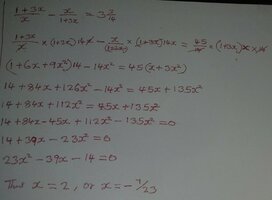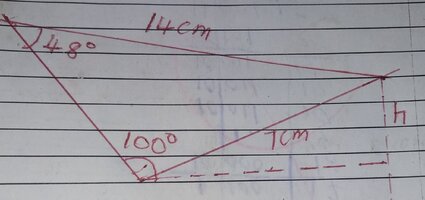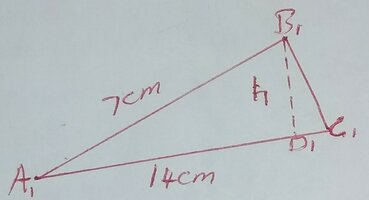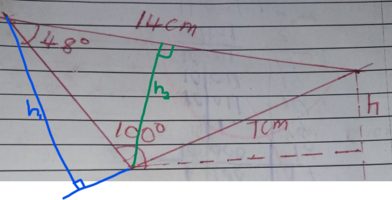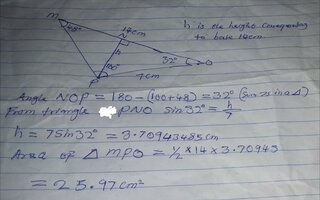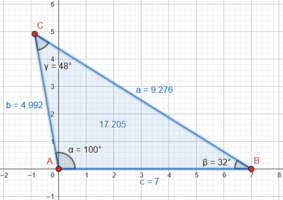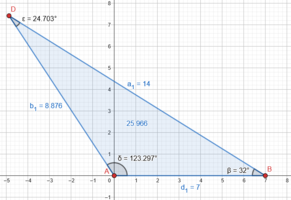I know that the area of a triangle [math]=\frac{1}{2}~base×height[/math] And that all triangles has area. I also know that to calculate the area of triangle where the height is not given and all the three sides are given, the area can also be calculated.
My focus here is how do I define the height of some triangles to enable me calculate the area. Now here is a problem. I am required to find the area of these triangles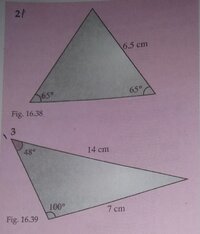

I have done #2. Here is my work on it. B= base, h= height.
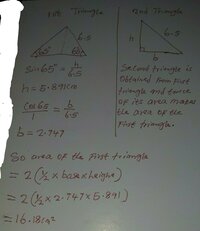
When I tried solving #3, I was stucked because I found it difficult defining and obtaining the height. Nevertheless, I managed to do something. I will show what I managed to do on post #2
My focus here is how do I define the height of some triangles to enable me calculate the area. Now here is a problem. I am required to find the area of these triangles


I have done #2. Here is my work on it. B= base, h= height.

When I tried solving #3, I was stucked because I found it difficult defining and obtaining the height. Nevertheless, I managed to do something. I will show what I managed to do on post #2

